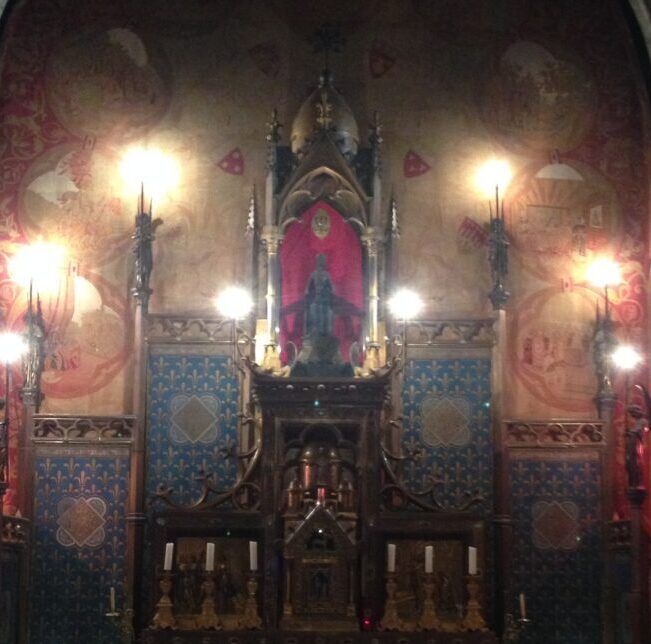There are very few personalities in the history and literature of Western Culture as intriguing, enigmatic, tantalizing, controversial, and enduring as Mary Magdalene. The Woman with the Alabaster Jar: Mary Magdalen and the Holy Grail takes it all on, in her defense. You will encounter Mary a lot on a Rhone River cruise in Southern France.

There seem to be a hundred questions asked about fair 
she…” Filling in that blank has been sport for centuries. An apostle? The favored Apostle? An evangelist? At the Last Supper? The “First Witness” to see him resurrected? A rich benefactress? The one with whom he shared his deepest secret beliefs? A lover? A prostitute? The wife? The mother of his child? Children?
The questions keep coming. Did she retire with Mother (in-law?) Mary to Ephesus? Or did she flee to Southern France with St Maximin and Joseph of Arimathea and become a penitent hermit in a cave? Or was it Lazarus and his sisters, Mary and Martha? Was she pregnant with the child of Jesus when she landed in the marshes of Marseilles? Was the child a girl? Did the girl carry the bloodline of Christ, the Sangreal, the Holy Grail?

Are her bones in Burgundy’s Vezelay Abbey, as declared by the monks in 1050 AD? Or are they paraded around on the July 22 feast day in Provence, at St Maximin La Sainte Baume, as blessed by Pope Boniface VIII in 1295 AD?
Did Mary Magdalene inspire Christian worship in France before the Roman Church arrived? The Cathar heresy and the Albigensian Crusade? The Knights Templar and the Huguenots? The Pilgrims and the Founding Fathers of America? The Da Vinci Code?
Is Mary the Virgo, Goddess of the Womb and of rebirth? The original “Virgin”, meaning “a woman beholden to no man”? The “Our Lady” venerated by the stunning array of French Gothic cathedrals said to mimic the great stars of the constellation? Do the famous labyrinths of these cathedrals represent the birth and rebirth of life and the entrance to the womb of life for which Mary is a symbol?

Do all of the 180 Black Madonnas in French spiritual sites really represent the “invisible Mary”, the wife, as opposed to Mary the Mother? Can we trust the teachings of the Church on that subject? Did envy of Mary cause Peter and Paul to create church structures and protocols to exclude women from positions of influence? Has the Church co-opted all trace of Mary Magdalene and replaced it with Madonna?
Was Mary a prostitute, as declared by Pope Gregory I in 591 AD, or not, as very quietly admitted by the Church with unannounced revisions to the General Roman Calendar in 1969? Had she been branded a prostitute so effectively by the most famous artists of Western culture by 1969 that quiet admission made no impact on the poor girl’s reputation? Was the story just a great excuse for every painter in Europe to paint a nude picture of his girlfriend?
Questions and more questions. Two thousand years later, Mary Magdalene stirs passions from all sides. The Woman with the Alabaster Jar: Mary Magdalen and the Holy Grail is a great way to join the inquiry. Be prepared for spirited debate…perhaps, with a glass of inspiring Rhone wine.









